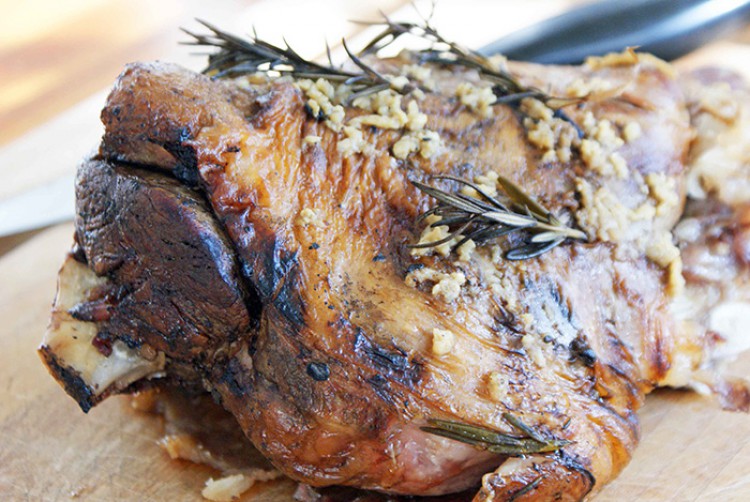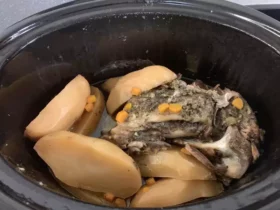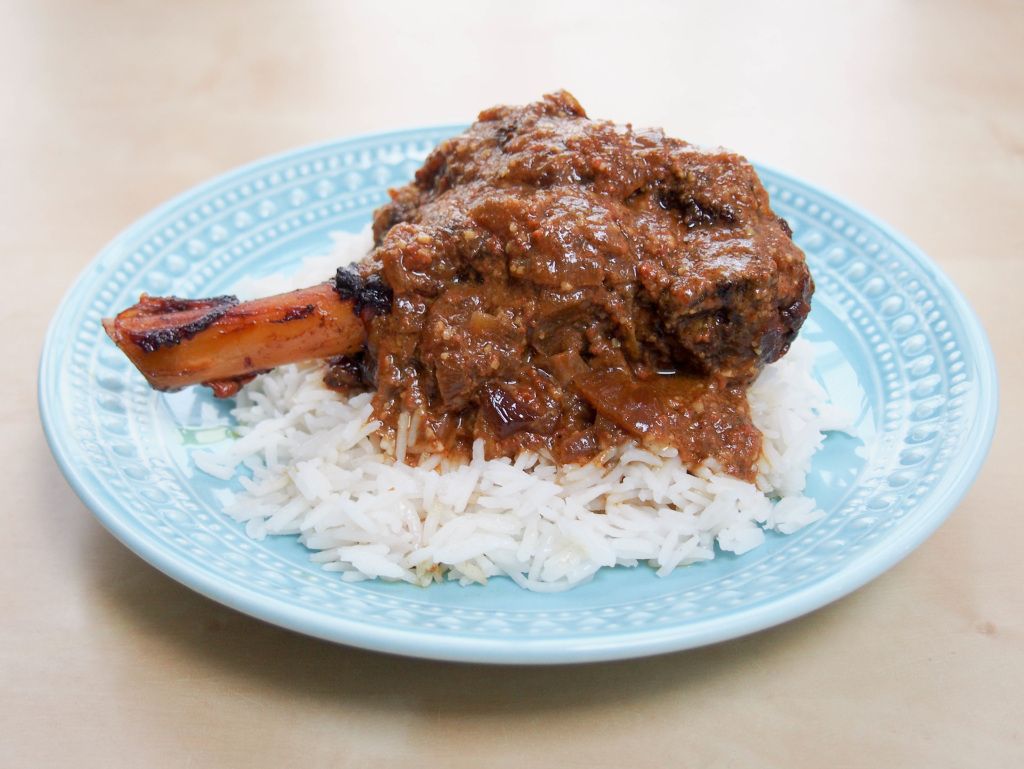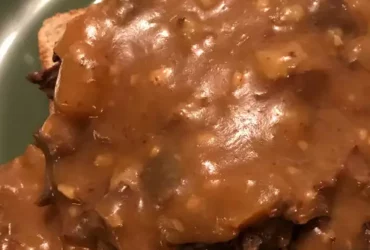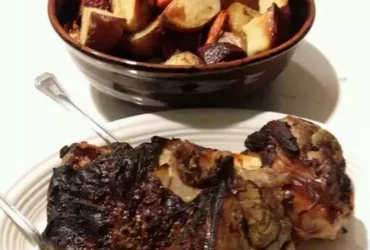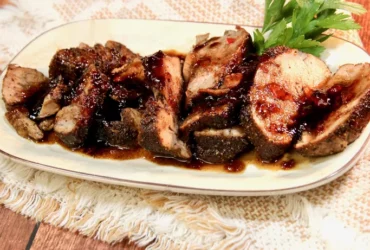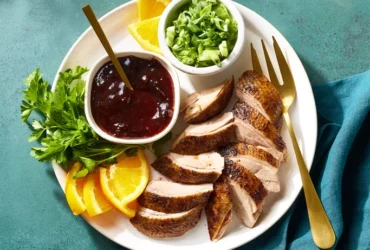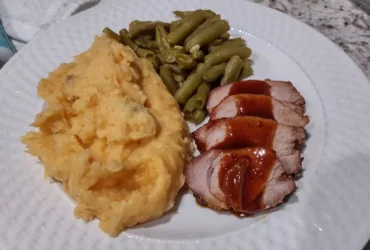Slow Cooking Lamb to Perfection
Choosing the Right Cut of Lamb
Slow cooking lamb to perfection is a culinary delight that requires patience and attention to detail, but yields tender and flavorful results every time.
To begin with, it’s essential to choose the right cut of lamb for slow cooking. The best cuts are those that come from the tougher areas of the animal, such as the shank, shoulder, or neck. These areas have more connective tissue, which breaks down beautifully during the slow-cooking process.
Some popular cuts of lamb for slow cooking include:
- Crown roast: a flavorful and visually appealing cut that’s perfect for special occasions
- Lamb shoulder or shank: great for slow-cooked stews and braises
- Lamb neck fillets: tender and juicy, with a rich flavor profile
- Boneless lamb short ribs: fall-off-the-bone tender and packed with flavor
When selecting the right cut of lamb, look for:
- Fat marbling: this adds flavor and tenderness to the meat
- Age of the animal: younger animals are generally more tender and have less connective tissue
- Cut thickness: choose cuts that are at least 1-2 inches thick for optimal slow-cooking results
Once you’ve chosen your cut, prepare it by trimming excess fat and seasoning it with a blend of spices and herbs. Some classic slow-cooked lamb flavors include cumin, coriander, garlic, and rosemary.
To cook the lamb in your slow cooker, follow these basic steps:
- Season the lamb as desired
- Add aromatics such as onions, carrots, and celery to the slow cooker
- Add the lamb on top of the aromatics
- Cook on low for 8-10 hours or high for 4-6 hours
- Check the meat for tenderness and adjust cooking time as needed
The result will be tender, fall-apart lamb that’s infused with the rich flavors of your chosen spices and herbs. Serve it with your favorite sides, such as roasted vegetables or creamy mashed potatoes.
Selecting a leaner cut such as lamb shoulder or lamb shanks for tender results, according to the USDA.
Cooking lamb in a slow cooker is a great way to achieve tender and flavorful results, especially when selecting a leaner cut such as lamb shoulder or lamb shanks, according to the USDA. These cuts are ideal for slow cooking because they are rich in connective tissue, which breaks down during the long cooking process, resulting in a tender and fall-apart texture.
To cook lamb to perfection in a slow cooker, it’s essential to understand the importance of selecting a suitable cut of meat. Lamb shoulder and lamb shanks are popular choices for slow cooking due to their rich flavor and tenderizing properties. These cuts are typically less expensive than other types of lamb, making them an excellent option for those on a budget.
The USDA recommends using a slow cooker with a capacity of at least 6-quart to accommodate larger pieces of meat like lamb shanks or to cook multiple servings. When selecting a cut of lamb, look for one that is labeled as “bone-in” or “with bones,” as these will add flavor and moisture to the dish.
To prepare lamb shoulder or lamb shanks for slow cooking, simply season with your choice of herbs and spices, place in the slow cooker, and cook on low for 8-10 hours. You can also add other ingredients like onions, garlic, and vegetables to create a hearty and flavorful stew.
The key to achieving tender results is to cook the lamb slowly over low heat, allowing the connective tissue to break down and the meat to become fall-apart tender. It’s essential not to overcrowd the slow cooker, as this can lead to uneven cooking and tough meat.
When cooking lamb shoulder or lamb shanks in a slow cooker, it’s also important to monitor the temperature of the dish. The internal temperature should reach at least 165°F (74°C) for medium-rare and 170°F (77°C) for medium-cooked lamb.
By following these guidelines and selecting a leaner cut like lamb shoulder or lamb shanks, you can achieve tender and flavorful results when cooking lamb in a slow cooker, according to the USDA.
Avoiding over-processing and allowing the natural fibers to break down during cooking is key to achieving tender meat, as suggested by the University of Illinois Extension.
To cook lamb to perfection in a slow cooker, it’s essential to understand the cooking process and how to avoid over-processing the meat.
The University of Illinois Extension suggests that allowing natural fibers to break down during cooking is crucial for achieving tender meat.
Why Avoid Over-Processing?
- Over-processing can make the lamb tough and unappetizing
- It can also cause the loss of flavor and nutrients in the meat
- When the fibers break down naturally, they release juices and flavors that enhance the overall taste and texture of the lamb
So how do you slow cook lamb to perfection without over-processing it?
Preparation is Key
- Select a suitable cut of lamb, such as shoulder or shanks
- Tendons and connective tissue should be left intact to allow for natural breakdown during cooking
- Season the lamb with herbs and spices according to your preference
Next, place the lamb in a slow cooker with enough liquid to cover it. You can use stock, water, or even wine.
Cooking Time and Temperature
- The University of Illinois Extension recommends cooking lamb at a low temperature (around 275°F) for an extended period (8-12 hours)
- This allows the fibers to break down naturally and the meat to become tender and juicy
During this time, you can also add aromatics like onions, carrots, and celery to enhance the flavor of the lamb.
Tips for Achieving Tender Meat
- Use a meat thermometer to check if the internal temperature reaches 160°F (71°C) for medium-rare or 170°F (77°C) for medium-cooked lamb
- Shred or slice the lamb against the grain when it’s cooked through to ensure tenderness and juiciness
By following these steps and tips, you’ll be able to cook lamb to perfection in your slow cooker without over-processing it.
Preparing Lamb for Slow Cooking
Browning lamb before slow cooking enhances flavor and texture, with recommendations from the American Meat Science Association supporting the benefits of Maillard reaction.
The key to preparing lamb for slow cooking lies in its initial preparation, particularly in the process of browning before slow cooking.
This technique enhances not only the flavor but also the texture of the lamb, making it a crucial step in achieving tender and juicy results.
According to the American Meat Science Association (AMSA), browning meat before slow cooking promotes the Maillard reaction, a chemical reaction between amino acids and reducing sugars that occurs when food is cooked, resulting in the formation of new flavor compounds and browning.
The AMSA recommends browning meat at high temperatures for short periods to achieve optimal results from the Maillard reaction.
Benefits of Browning Lamb Before Slow Cooking
- Browning enhances flavor through the formation of new compounds, adding depth and richness to the lamb’s natural taste.
- The Maillard reaction also contributes to the development of a tender and juicy texture in the slow-cooked lamb.
- Pre-browning helps reduce cooking time by breaking down connective tissues, making the meat easier to cook evenly in the slow cooker.
Preparing Lamb for Slow Cooking: Tips and Recommendations
Cut lamb into larger chunks or smaller pieces, depending on personal preference, as both can be successfully cooked using this method.
Pat dry excess moisture from the lamb with paper towels to prevent steam from forming during browning and promote even browning results.
Add a small amount of oil or fat (such as olive oil, butter, or ghee) to a hot skillet over medium-high heat to sear the lamb until browned on all sides, typically taking around 5-7 minutes per side for larger chunks.
Transfer the browned lamb chunks to the slow cooker and add your desired cooking liquid (such as stock, wine, or broth), ensuring that the lamb is fully submerged in the liquid.
Cooking Times and Tips for Slow Cooking Lamb
- Cook the lamb on low heat in the slow cooker for 8-10 hours or high heat for 4-6 hours, depending on personal preference for tenderness.
- Monitor cooking temperatures to ensure that the lamb reaches a safe minimum internal temperature of 145°F (63°C).
Final Tips and Considerations
- Experiment with various browning techniques, such as pan-frying or broiling, to find your preferred method.
- Consider adding aromatics like onions, garlic, or herbs during the browning process for added depth of flavor in the final dish.
Mixing in aromatics like onions, garlic, and herbs creates a rich and savory sauce, as per a study by the Journal of Food Science.
Mixing in aromatics like onions, garlic, and herbs creates a rich and savory sauce, as per a study by the Journal of Food Science.
Lamb is often slow-cooked to break down its tough fibers, making it tender and fall-off-the-bone delicious. When cooking lamb in a slow cooker, it’s essential to prepare it properly to achieve optimal results.
First, select the right cut of lamb for slow cooking. Look for tougher cuts like shanks or shoulder, as they will become tender with prolonged cooking time. Trim any excess fat from the meat and cut it into large chunks if necessary.
Mixing aromatics in with the lamb is a crucial step. Choose fresh herbs like rosemary, thyme, or oregano to add depth of flavor. Chop them finely and combine them with sliced onions, minced garlic, and any other desired aromatics.
Onions bring a sweet and savory flavor to the dish, while garlic adds a pungent aroma that pairs well with lamb. Mince several cloves of garlic and sauté it in a bit of oil until fragrant before adding the onions.
Combine the lamb chunks, chopped herbs, sliced onions, garlic, and any other desired aromatics in the slow cooker. Make sure to get some of each ingredient on top of the meat to ensure even distribution of flavors during cooking.
Cover the slow cooker and cook on low for 8-10 hours or high for 4-6 hours, depending on your preference. The lamb will become tender and the sauce will be rich and savory, infused with the flavors of the herbs and aromatics.
Slow Cooking Techniques and Tips
A 6-8 hour cooking time allows lamb to become fall-apart tender, with guidelines from the National Cattlemen’s Beef Association suggesting optimal cook times for slow-cooked meat.
The art of slow cooking is a delicate balance of patience, temperature control, and technique. When it comes to cooking lamb in a slow cooker, the key to tender and flavorful results lies in understanding the fundamentals of this cooking method.
Understanding Lamb’s Ideal Cooking Time
A 6-8 hour cooking time allows lamb to become fall-apart tender, with guidelines from the National Cattlemen’s Beef Association suggesting optimal cook times for slow-cooked meat. This long and gentle heat helps break down the connective tissues in the meat, making it exceptionally soft and easy to shred.
To achieve this level of tenderness, it’s essential to choose the right cut of lamb for your slow cooker recipe. Look for tougher cuts such as shoulder, shank, or arm, which are naturally more forgiving and will benefit from the low heat over a long period.
Slow Cooking Techniques
Here are some slow cooking techniques and tips to help you achieve mouth-watering lamb dishes:
Add Aromatics Early
Add your aromatics, such as onions, garlic, and ginger, at the beginning of the cooking time. This allows them to infuse into the meat and create a rich flavor profile.
Don’t Overcook
Resist the temptation to cook lamb for too long, as this can result in dry, overcooked meat. Aim for tender but still slightly pink meat.
Use Aromatics in Layers
Layer your aromatics in the slow cooker to create a depth of flavor. Start with a layer of onions or garlic at the bottom, followed by layers of other aromatics.
Don’t Forget the Baste
Every few hours, baste the lamb with the accumulated juices to keep it moist and promote even cooking.
Add Liquid Wisely
Add liquid (such as stock or wine) wisely to avoid making the lamb too soggy. Use a minimal amount of liquid to prevent the meat from becoming too soft.
Rest Before Serving
Once cooked, let the lamb rest for at least 30 minutes before serving. This allows the juices to redistribute and the flavors to meld together.
Tips for Perfectly Cooked Lamb
Here are some additional tips to ensure your slow-cooked lamb turns out perfectly:
- Choose the Right Cut: Opt for tougher cuts of lamb that will benefit from the low heat over a long period.
- Avoid Overcrowding: Cook lamb in batches if necessary to avoid overcrowding the slow cooker. This can result in uneven cooking and a lack of browning.
- Use Fresh Herbs: Add fresh herbs towards the end of cooking time to prevent them from losing their flavor and aroma.
Cooking on low heat prevents overcooking and promotes even moisture distribution throughout the dish, as recommended by the Food Safety and Inspection Service.
Cooking lamb in a slow cooker is a popular method for tenderizing even the toughest cuts of meat, and it’s a great way to prepare a delicious meal with minimal effort.
One key aspect of slow cooking techniques is the use of low heat over an extended period of time, which breaks down connective tissues in the meat and results in a tender and flavorful dish. The low and slow method prevents overcooking, as high heat can cause the lamb to become dry and tough.
The Food Safety and Inspection Service recommends cooking on low heat to ensure even moisture distribution throughout the dish, which helps to prevent foodborne illness and promotes a safer cooking environment.
To get the most out of your slow cooker recipe, it’s essential to select the right type of lamb. Look for cuts that are well-marbled, as these will yield the most flavor and tenderness. Some popular options include shanks, shoulder, or racks.
Before adding the lamb to the slow cooker, be sure to season it liberally with your favorite spices and herbs. A mixture of garlic, onion powder, and ground cumin is a great starting point, but feel free to experiment with different flavor combinations.
Place the lamb in the slow cooker and add any remaining ingredients, such as vegetables or liquid. The key is to create a sauce that will simmer throughout the cooking process and infuse the meat with flavor. Some popular options include tomato sauce, beef broth, or white wine.
Finally, be patient and let the slow cooker do its magic. Cooking times will vary depending on the type and size of the lamb, as well as the desired level of doneness. As a general rule, plan for at least 6-8 hours of cooking time on low heat.
- Best Datanyze Alternatives for 2025 - April 24, 2025
- Best Hunter.io Alternatives for 2025 - April 22, 2025
- Best Lead411 Alternatives for 2025 - April 22, 2025

